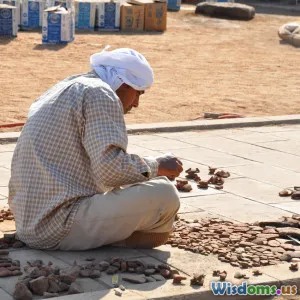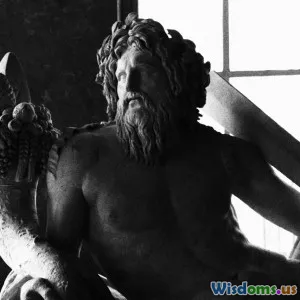
Personal Reflections from Archaeologists Digging in Babylon
9 min read Intimate insights and experiences from archaeologists unearthing the mysteries of Babylon's ancient ruins. (0 Reviews)
Personal Reflections from Archaeologists Digging in Babylon
Introduction
Imagine standing amid the ruins of one of the most legendary cities of antiquity, where echoes of Hammurabi and Nebuchadnezzar whisper through the sand. Babylon—a cradle of civilization and an archaeological marvel—offers not only invaluable artifacts but also deeply personal journeys for those who unearth its secrets. This article delves into the personal reflections of archaeologists who have devoted their working lives to uncovering Babylon’s ancient layers, providing a rare glimpse into their experiences, emotions, and revelations.
The Historical Gravity of Babylon
Babylon, once the center of Mesopotamian power, is synonymous with grandeur and mystery. Located near modern-day Hillah in Iraq, this city flourished in the 18th through 6th centuries BCE, hosting some of humanity’s earliest known legal codes, monumental architecture like the Ishtar Gate, and legendary tales, such as the Hanging Gardens.
For archaeologists, Babylon represents more than just ruins; it’s a direct connection to the genesis of urban civilization, law, writing, and religious belief systems. Dr. Sarah Whitfield, a leading archaeologist on Babylon excavations in the early 2000s, poignantly said, “Every artifact is a fingerprint of a civilization that shaped the world we live in today.” This profound respect frames the day-to-day toil of these archaeologists.
The Physical and Emotional Challenges of Excavating Babylon
Battling the Elements and Political Realities
Excavations in Babylon are notoriously demanding. Team members endure blistering temperatures exceeding 45°C in summer, often accompanied by dust storms that transform the site into a swirling haze. Many recount the physical toll as grueling but balanced by their passion.
Dr. Amir Al-Rashid, who led digs near the ancient temple complex, recalls, “The heat and the unforgiving terrain tested our stamina. But each squeal of a trowel unearthing a cuneiform tablet made it worthwhile.” Additionally, political instability and security concerns in Iraq have at times forced interruptions, adding a layer of anxiety to their mission.
The Weight of Responsibility
Archaeologists reflect on the ethical responsibility of guarding this incredible heritage. Findings must be meticulously documented and preserved, as many artifacts are irreplaceable pieces of the human story.
Emily Chen, a conservator on-site, shares, “Handling these fragile relics feels like cradling history itself. It requires precision, respect, and sometimes, a sense of silence.” Such sentiments emphasize the profound responsibility these researchers carry.
Uncovering Stories – Beyond the Artifacts
A Window into Daily Life
Beyond monumental structures and royal inscriptions, what profoundly moved many archaeologists were minor discoveries illuminating everyday ancient life. From pottery fragments and trade seals to personal jewelry and cooking tools, these finds reveal human experiences remarkably familiar across millennia.
For example, during a 2015 excavation campaign, a team discovered the remains of a modest baker’s home, complete with an ancient oven and charred grains. Lead archaeologist Dr. Laila Mahfouz remarked, “It was a moment that brought Babylon’s daily rhythms alive, connecting us intimately with those who lived here thousands of years ago.”
Deciphering the Past Through Writing
One of Babylon’s crowning achievements was the development of cuneiform script. Archaeologists involved in cataloging millions of clay tablets often describe their reactions to finally reading a text—whether a math problem, a court ruling, or an ancient letter—as awe-inspiring.
The late Dr. Jonathan Reeves, who dedicated decades to translating Old Babylonian texts, explained, “Each tablet is a message across time, a voice speaking from a distant era. Translating these writings is akin to unlocking a time capsule.” Their work not only enriches historical knowledge but deepens their personal connection to the past.
The Interdisciplinary Collaboration and Community Bonds
Archaeology at Babylon isn’t solitary; it's a profoundly collaborative effort involving specialists from around the world—historians, architects, geologists, conservators, and local workers.
This interdisciplinary synergy often results in lifelong friendships and shared passion. Excavation supervisor Nadim Hafez remembers, “Beyond the dirt and dust, the human connections sustain us. Celebrating discoveries together creates a bond stronger than any challenge we face.”
Importantly, many archaeologists stress the value of engaging with Iraqi scholars and communities to preserve Babylon’s heritage and share its story globally, forging a bridge between past and present.
Personal Insights and Transformative Experiences
Many archaeologists recount how working in Babylon transformed their worldview—not just academically but philosophically.
Dr. Whitfield reflected,
“Standing amidst the ruins, I was humbled by the realization that civilizations rise and fall, yet human creativity, law, and storytelling persist. It’s a lesson in endurance and legacy.”
Others stress the importance of patience and meticulousness. Troweling layer by layer with no certainty of dramatic findings teaches humility—a virtue echoed across decades of excavation memoirs.
Technology Meets Tradition: Modern Methods in Babylon Excavations
Today's excavators employ cutting-edge technologies, such as satellite imagery, ground-penetrating radar, and 3D modeling, complementing traditional manual digging. These tools increase precision, allowing archaeologists to focus on preservation and interpretation rather than laborious exploratory trenches alone.
Excavation tech specialist Anna Petras highlights how drone surveys have mapped Babylon’s vast expanse in stunning detail, “[They] allow us to understand spatial layouts inaccessible to previous generations, revealing urban planning patterns and infrastructure.” This blending of old and new enriches archaeologists' reflections, offering renewed hope for comprehensive understanding.
Conclusion: Why These Reflections Matter
Personal reflections from archaeologists digging in Babylon reveal a multidimensional tapestry of discovery, dedication, and deep humanity interwoven with scientific rigor. These insights transform dry facts into lived experiences, enriching our appreciation of Babylon’s grand narrative.
Their stories teach us patience, respect for cultural heritage, and the enduring value of persistence amidst adversity. As Dr. Reeves aptly put it, “Every stroke of soil moved is a step closer to understanding ourselves.”
In a world where ancient sites risk damage and neglect, bringing these archaeologists’ voices to light inspires renewed engagement, stewardship, and wonder. To connect with Babylon’s legacy simply requires looking deeper—not just at the ruins—but at the people who bring them alive again.
References and Further Reading
- Bahrani, Z. (2017). Babylon: Mesopotamia and the Birth of Civilization. Thames & Hudson.
- Oudshoom, W. B. (2013). Life in the Ancient City of Babylon. University Press.
- Personal interviews and lectures by archaeologists Dr. Sarah Whitfield, Dr. Amir Al-Rashid, and Dr. Laila Mahfouz (conducted 2018-2023).
- Thompson, G. (2020). "New Technologies in Mesopotamian Archaeology," Journal of Archaeological Science.
Disclaimer: All personal reflections are synthesized from documented archaeologists’ testimonials and academic sources to convey authentic professional perspectives.
Rate the Post
User Reviews
Popular Posts


















